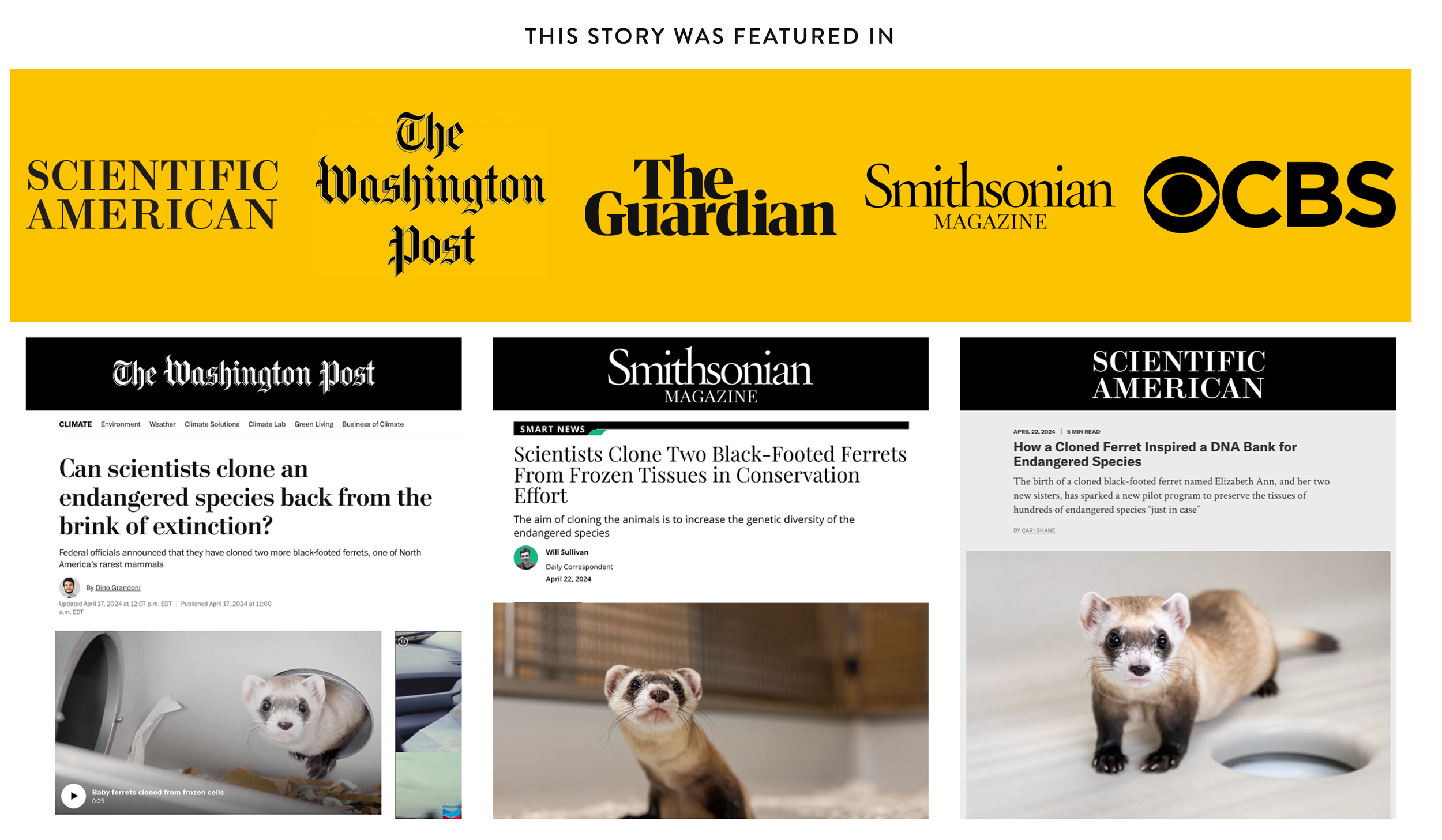Science Communication 101: 7 Fun Ways to Get Your Message Across to Non-Scientists
Science Communication 101: 7 Fun Ways to Get Your Message Across to Non-Scientists
A Black Footed Ferret Clone Photographed for Revive & Restore | Impact Media Lab
Ever felt like you're speaking alien when trying to explain your research to your non-scientist friends? Don't worry, we've all been there!
In today's fast-paced world, with so many cool discoveries and tech breakthroughs, science communication is more important than ever. Science communication provides context and a way for the public to understand why research is critical to understand a particular topic or policy.
But let's face it, sharing science with non-scientists can be challenging. It’s hard to figure out where to start when bridging the gap between science and the wider world. So, grab a cup of coffee (or tea, we don't judge), and let's dive into seven awesome strategies that'll help you rock your science communication game.
1. Keep It Simple, Silly
First things first: ditch the jargon, and break your research down into its simplest terms. Sure, jargon is helpful in succinctly summarizing concepts in a lab, but they're like kryptonite to non-scientists. The key to great science communication is breaking down complex ideas into bite-sized, digestible nuggets.
Start by thinking critically about the jargon you’re using: what exactly are you illustrating? Is there a simpler word that you could use in its place? If not, then take some time to walk your reader through the jargon, defining the term like you're chatting with a friend over coffee.
A fun tip, if you’re up for the challenge: try using an analogy! Compare tricky concepts to something that people may encounter in their everyday lives. Stories in popular culture, like movies, could also be a great source of inspiration. For instance,your immune system could be described as your body's personal superhero team, always ready to fight off the bad guys (aka germs).
Remember, simplifying doesn't mean dumbing down. It's all about meeting your audience where they’re at, and making your awesome research accessible to more people.
After all, isn't that what great science communication is all about?
2. Picture This: The Power of Visual Aids
In our Instagram-obsessed world, a picture (or even better, a video) is really worth a thousand words. When it comes to science communication, well-crafted visuals can be total game-changers. They're the secret sauce that makes complex info go down smoothly!
Infographics are the MVPs of visual science communication. They're perfect for turning data-heavy content into eye-candy that's both informative and fun to look at. And let's not forget about good ol' charts and graphs – when done right, they can help folks grasp stats in a snap.
And if you really want to really wow your audience, try animations or interactive visuals. They're perfect for explaining processes that unfold over time. Imagine showing climate change over decades with a cool animation – way more impactful than a boring static graph, right?
When creating visuals for SciComm, remember: less is more. Keep it clean, simple, and focused on your main message. Your goal is to boost understanding, rather than overwhelm your viewer with a boatload of information.
3. Once Upon a Time in Science...
Here's a little secret about humans: we're suckers for a good story. By turning your research into a gripping tale, you can make your science communication not just informative, but downright addictive!
Start by introducing the 'characters' in your science story. It could be you and your lab mates, your study participants, or even the cute little insects you're studying. Then, structure your info like an epic quest – with a beginning, middle, and end.
For this lab, we wanted to build a brand and website as bold, compassionate, and radical as the science itself. The client wanted the design to feel open and free flowing, with big pops of color.
You can even throw in some drama:
What problems were you trying to crack?
What roadblocks did you hit?
This creates suspense and keeps your audience hooked. Finally, reveal your findings like the climax of a blockbuster movie, highlighting why they matter in the real world.
Don't be shy about sharing personal anecdotes in your science communication. Did something funny happen in the lab? Did you have an 'aha!' moment while eating a sandwich? People connect with emotions. And we’ve seen firsthand how these little stories make science feel more human and relatable.
4. Get Social: Science Communication in the Digital Age
Social media isn't just for cat videos and food pics – it's a goldmine for science communication. Platforms like Twitter, Instagram, and TikTok let you reach tons of people directly and show the world that scientists are fun, passionate, and relatable people too!
Twitter was once the most popular platform for scientists and the science-curious public – and it still is in some form today. Twitter can be perfect for quick updates, joining hot debates, and networking. Plus, the character limit forces you to boil down your message to its essence – great practice for snappy science communication!
Instagram and TikTok are your go-to for visual science communication. Share eye-catching infographics, give behind-the-scenes peeks at lab life, or make short, fun videos explaining scientific concepts. Who knows, your lab dance routine or research subjects might just go viral!
This media campaign for Revive & Restore generated millions of views worldwide across news and media platforms.
When creating social media content for science communication, keep it short, sweet, and visually appealing. Use relevant hashtags to boost visibility. And remember, social media is a two-way street – engage with your followers, answer questions, and join in on discussions. It's all about building a community around your science.
5. Team Up with the Pros
Let's face it: while we scientists are experts in our fields, we might not always be pros at science communication. And you don’t need to be. That's where collaborating with science communicators comes in handy. It's like having a secret weapon to supercharge your message.
Science communicators are like the translators of the science world. They know how to turn complex concepts into engaging content that works across different platforms. Plus, they're pros at figuring out who your audience is and how to reach them effectively.
These collaborations can take many forms in science communication. You might team up with a science journalist to write a killer feature article, work with a graphic designer to create mind-blowing infographics, or partner with a video producer to make YouTube or website content that's both educational and entertaining.
These partnerships don't just make your science communication more effective – they're also great learning opportunities. By working with communication pros, you can level up your own skills. It's a win-win!
6. Step into the Spotlight: Public Speaking and Outreach
Nothing beats face-to-face interaction when it comes to science communication and making connections. Public speaking and outreach events let you connect directly with your audience, get immediate feedback, and leave a lasting impression.
When prepping for a talk, focus on crafting a story that'll keep your audience on the edge of their seats. Start with a bang – maybe a mind-blowing fact or an intriguing question. Use your voice, gestures, and movement to keep things lively. And practice, practice, practice! Nobody is a natural at public speaking, they’ve just practiced more. The goal is to come across as confident and approachable.
My 7-year-old working the booth.
School visits and community events are awesome for science communication. These places attract folks that are driven by curiosity. Prepare some cool visuals, engaging demos or hands-on activities to make your presentations unforgettable.
Remember, public speaking is like a muscle – the more you flex it, the stronger it gets. Look for chances to present your work, whether it's at local community centers, schools, or big science communication events. Each time you do it, you'll get better at engaging with all kinds of audiences.
7. Open Doors: Making Science Accessible to All
In our quest to reach everyone with our awesome science, let's not forget about accessibility. Creating content that works for people with disabilities isn't just the right thing to do – it also helps your science communication reach an even wider audience.
Start by keeping your written content clear and snappy. Use short sentences and paragraphs, and break things up with subheadings. This doesn't just make your science communication easier for everyone to read – it's especially helpful for folks with cognitive disabilities or reading challenges.
For visual content, always include alt text for images. This lets visually impaired people using screen readers understand what's in the picture. When making videos, add captions and transcripts. For complex visuals, consider creating audio descriptions.
During public speaking gigs, keep in mind that some audience members might have hearing difficulties. Speak clearly, face the audience, and use visual aids to reinforce key points. If possible, have a sign language interpreter for bigger events.
By making your science communication accessible, you're showing that you care about including everyone. Plus, you're making sure your awesome science reaches as many people as possible.
Wrapping It Up: Your Science Communication Journey Starts Now
Alright, science rockstars!
Effective science communication matters more than ever because we care to see your purpose-driven work reach the world and the people who need it the most.
By simplifying your language, using eye-catching visuals, telling gripping stories, rocking social media, teaming up with communication pros, getting out there for some face-to-face action, and making your content accessible to all, you can bridge that gap between complex research and public understanding like a pro.
These strategies don't just help spread scientific knowledge – they also build trust and support for science. As you start using these approaches, remember that great science communication is a skill that gets better with practice. Don't sweat it if your first attempts aren't perfect. Keep refining your techniques and stay passionate about sharing your science with the world.
We want to see your work shine!
We challenge you to start using these science communication tricks in your own work.
Share your experiences and wins in the comments below.
And hey, don't forget to hit that subscribe button for our newsletter to get more awesome science communication tips and updates. Together, we can make science more accessible, engaging, and impactful for everyone.
Here’s to changing the world, one well-communicated scientific idea at a time!
About the author
Impact Media Lab is a small-but-mighty creative team specializing in science brands, media, and strategy. We believe science can lead to seismic shifts in how we understand the world, but it takes great communication to make it happen.





